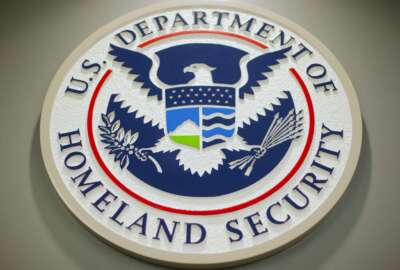Sponsored by Dakota State University
Upswing in direct hire helps DoD fill cyber workforce gaps
Nontraditional hiring, pay authorities were among the factors that let DoD significantly reduce its cyber workforce shortage over the past year.
The Defense Department has significantly ramped up its use of direct hire authority for civilians in its cyber workforce over the past year: about half of the people who’ve been added to positions into DoD’s Cyber Excepted Service have been hired via the expedited process instead of the competitive ranking process the government uses for most civilian positions.
The Pentagon’s enthusiastic embrace of the authority comes eight years after Congress first allowed DoD to create a new pay and personnel system for civilian cyber experts. And although the department’s implementation of the Cyber Excepted Service was somewhat slow during its initial years, officials made its expansion a priority in 2023 when they published a detailed implementation plan for DoD’s first cyber workforce strategy.
Defense officials also credit CES and the broader implementation plan with helping to sharply reduce the huge number of vacancies in DoD’s cyber workforce. As of last August, when the plan was first introduced, nearly a quarter of those jobs were empty. By last week, the vacancy rate had fallen to 16.2%.
“I think our programs are working, but we still have a long way to go,” Mark Gorak, the principal director for resources and analysis in the DoD CIO’s office, told reporters. “We estimate that we still have about a 28,000-employee shortage in the department. So we still have a long way to go to get to our closure here, but we’re getting better, and I think that’s one of the key metrics of success of this program.”
The continuing shortage is despite a large number of new hires over the past year: 14,000 civilians were hired into the department’s cyber workforce, significantly outpacing attrition. About 6,000 members of the workforce left the department over the same time period.
Direct hire, pay flexibilities are both success factors
Specifically as to the Cyber Excepted Service, Gorak said the direct hire authority component of CES has turned out to be the most important tool in attracting new civilians and shortening hiring timelines. When DoD’s CES hires are taken into account, time-to-hire for the cyber workforce now stands at 73 days, well below the Office of Management and Budget’s governmentwide 80-day goal.
But pay has made a difference too. The system allows for an 11th and 12th step increase in each pay grade, going beyond the within-grade salary increases that are allowed in the government’s General Schedule. And it allows DoD to set targeted local market supplements (TLMS) to make employees’ total compensation more competitive with private sector offerings in various areas of the country where cyber talent is in high demand.
“Every quarter, we look at all of our people getting TLMS, and then we decide if a certain work role — based on vacancy rate and other factors like how many military positions we have and what areas of the country are short — to determine if we’re going to implement TLMS for that portion of the workforce,” Gorak said. “So I think CES is a very great tool, but of all the special pay authorities the department has, it’s still probably one of the smallest. So part of our challenge there is the culture and getting the word out to our HR community about this authority and how to use it and how to manage it.”
Another benefit: By 2027, DoD expects to be able to segregate funding for the civilian cyber workforce into a separate pot of money, so that even if budget reductions call for cuts across the broader workforce, people in cyber positions are offered at least some protection.
CES expansion
Those are among the reasons why, despite what had been a slow implementation process, Defense officials are now asking Congress for permission to expand the new pay and hiring authorities across broader segments of the department’s digital workforce. As of now, CES can only be used for positions that directly support U.S. Cyber Command.
“We are still bound by that authority, but we are working through the legislative proposal process to help DoD expand that, and I am also working with [the Office of Personnel Management] and OMB to provide more cyber flexibilities for the entire federal government in hiring and in incentives. We’re working that from two different angles,” Gorak said.
Defense officials have previously said they favor expanding the existing Cyber Executive Service as a way to increase IT and cyber employees’ pay, rather than the Special Salary Rate approach the Department of Veterans Affairs and other civilian agencies are using or contemplating.
90% of goals met in first year
More broadly, he said the department had achieved about 90% of the objectives it set out to accomplish during the first year of the 2023-2027 implementation plan. Some of the others include:
- Creating a new Cyber Academic Engagement Office to consolidate DoD’s cyber existing academic programs.
- Moving DoD’s “8140” qualification process to a new online system. As of now, it includes 60 certifications from 13 outside training providers.
- Creating a new compensation calculator to help HR staff set pay for cyber positions.
- Creating a “Work Roles 101” guide to help standardize cyber work roles and policies across the department.
- Identifying training that’s still needed to help fill skill gaps in DoD’s workforce.
“Starting next quarter, we will actually track all of these and their timelines, and brief those every quarter to our senior leaders,” Gorak said. “I’m doing that to put some accountability and tracking of all these measures for all of our components so they know it’s getting attention, and if they need things like resources or extended timelines, we’re letting the senior leaders make those decisions.”
Copyright © 2025 Federal News Network. All rights reserved. This website is not intended for users located within the European Economic Area.
Jared Serbu is deputy editor of Federal News Network and reports on the Defense Department’s contracting, legislative, workforce and IT issues.
Follow @jserbuWFED






